
Weathering (Part 5)
Soil Development
Soils result from weathering of rocks. Soils can be grouped according to their origins: residual soil, colluvial soil, and alluvial soil.
Residual Soil
• Residual soil is soil formed from the weathering of the bedrock below. The texture and composition of residual soil reflects the parent rock.
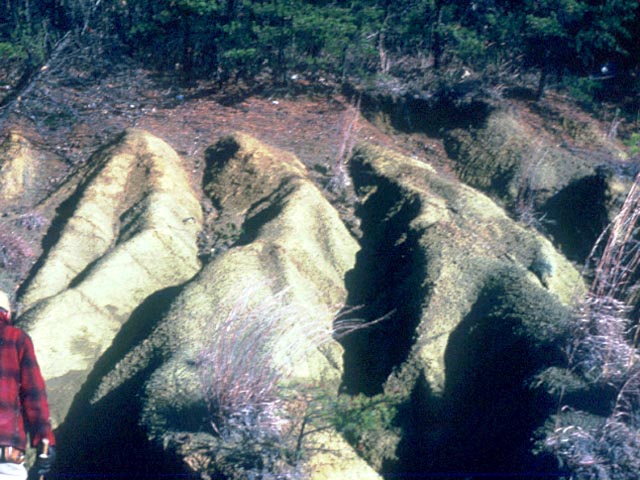
Residual soil forms on the bedrock (Photograph by Robert Whisonant)
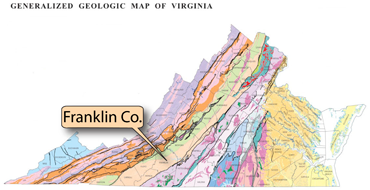 This deeply weathered residual soil (above photo) formed on mafic igneous rocks in the Piedmont of Franklin County. Erosion by running water causes the “badlands” topography.
This deeply weathered residual soil (above photo) formed on mafic igneous rocks in the Piedmont of Franklin County. Erosion by running water causes the “badlands” topography.
Colluvial Soil
• Colluvial soil is soil formed from the weathering of bedrock and then moved downslope by gravity. Colluvial soil is often different from the bedrock below it.
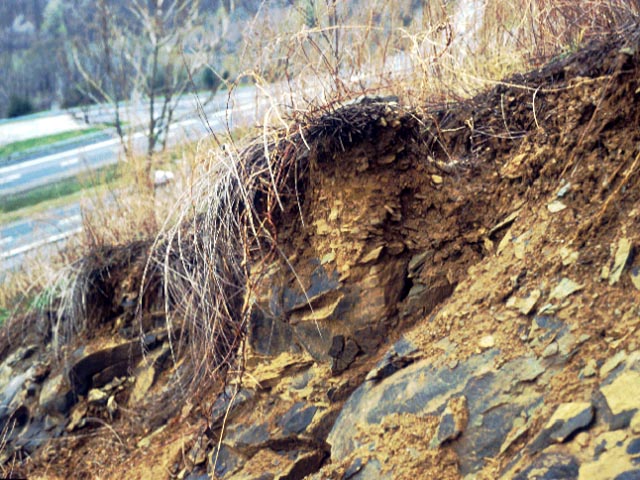
Colluvial soils form on hillsides from material that has moved down the slope. (Photograph by Robert Whisonant)
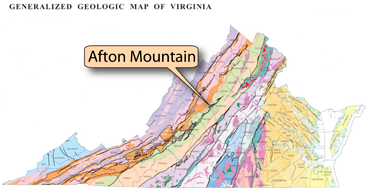 This colluvial soil (above photo) formed on a steep slope in the Blue Ridge on Afton Mountain, near Charlottesville. Note the large, angular blocks of parent rock.
This colluvial soil (above photo) formed on a steep slope in the Blue Ridge on Afton Mountain, near Charlottesville. Note the large, angular blocks of parent rock.
Alluvial Soil
• Alluvial soil is soil formed on stream deposits. It is nearly always different from the bedrock below it.
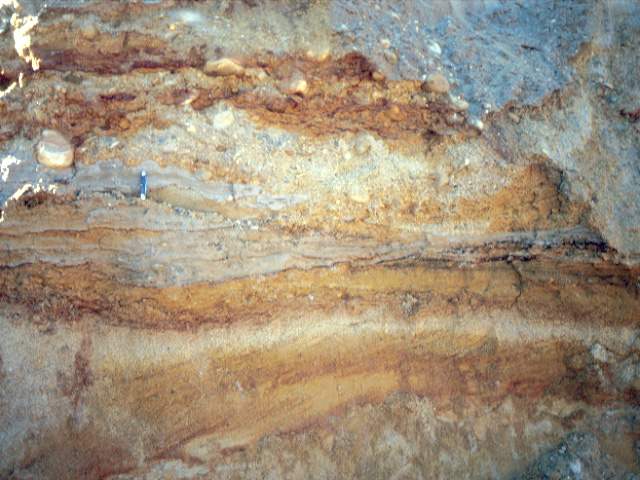
Alluvial soil (Photograph by Dave Hubbard)
Alluvial soils (above photo), like this one, are very common in Virginia’s Coastal Plain. Alluvial soils are made up of grains that have been transported and deposited by stream processes.